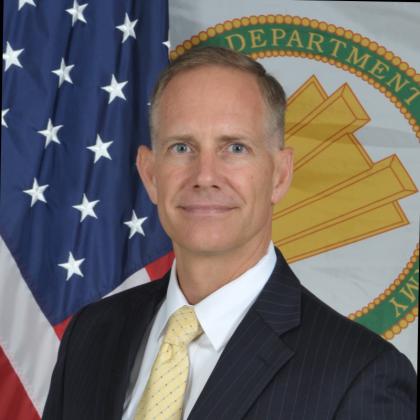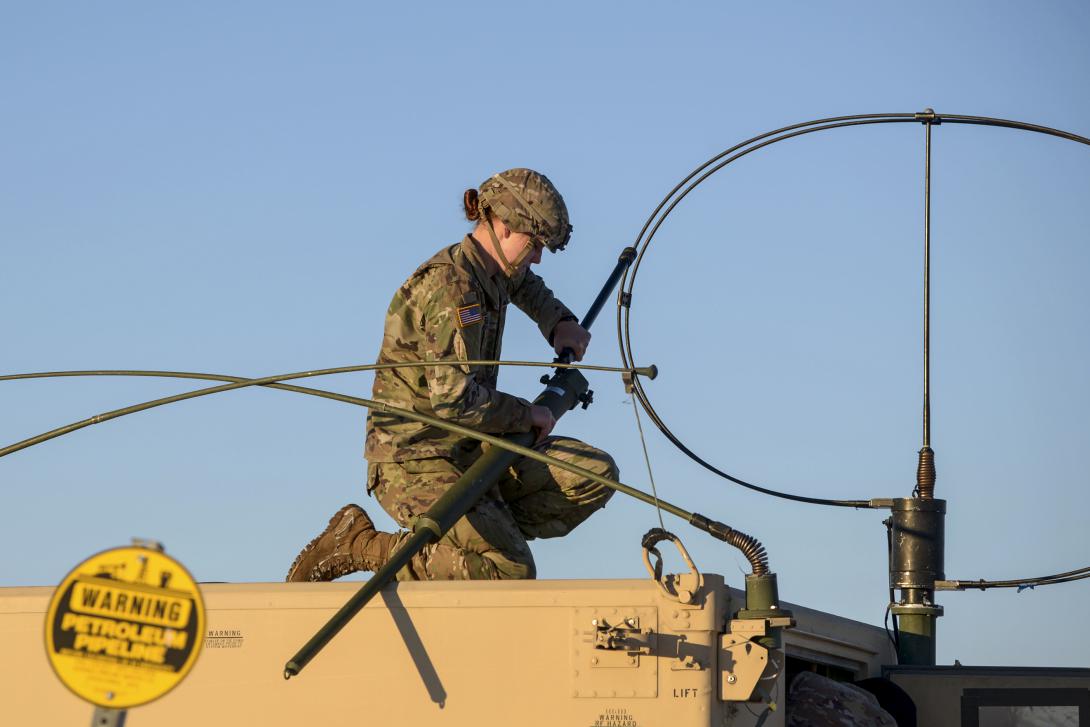Army Cyber Leaders Adopting New Electromagnetic Countermeasures
The U.S. Army Cyber Command’s Starblazor pilot program conducted in 2020 and 2021 validated the service’s ability to build, test and deliver advanced electromagnetic (ECM) countermeasures. And a simultaneous Army Cyber Center of Excellence assessment of doctrine, organization, training, materiel, leadership and education, personnel, and facilities and policy (DOTMLPFP) identified gaps to doing so.
During a SIGNAL Media phone interview, Mark Mollenkopf, Army Cyber Command’s science advisor to the commander, cited Starblazor as a major achievement that allowed him to assist numerous commanders and operators and analysts while successfully demonstrating the ability to rapidly generate and deliver advanced ECM and cyber effects. “We learned a ton of lessons, and we're actually still working to fold some of those lessons into our Army business processes to optimize how future expeditionary electromagnetic warfare and cyber operations will be conducted.”
Mollenkopf declined to say much about Starblazor for concern of providing open-source intelligence to U.S. competitors. But he summarized some of the lessons learned. “Some of the lessons are really specific to electromagnetic warfare and that we need to have the operational agility to see the spectrum at the very edge and then have the ability to rapidly prioritize electronic countermeasures and effects that we need to create on the fly,” he said. “And we also need to have the analytic horsepower as far to the edge as possible.”
That would allow the Army to identify friendly or malicious signals activities. “And that was one of the most important things,” Mollenkopf said. “So, in order to be able to do that quickly, it takes a big process. It takes analytic processes. It takes tooling. It takes the ability to transport big files around. There's a lot that we think we're going to have to engineer for the way forward.”
The “desired end-state” is an “end-to-end process and infrastructure that enables the Army to rapidly build and deliver electromagnetic countermeasures,” David May, senior intelligence advisor at the Army Cyber Center of Excellence, told SIGNAL Media via an email exchange.
Both the Starblazor pilot and the concurrent DOTMLPFP assessment “serve as a road map for shared understanding across Army organizations on ECM-enabling requirements as well as a pathway to develop an end-to-end process for ECM development,” May said.
The 15-month pilot demonstrated a methodology enabling the Army’s ability to rapidly build and deliver advanced ECMs, informing Army requirements and supporting multidomain operations. “The pilot was successful due to its relatively small scale. The assessment captured current Army impediments to executing at a scale necessary for multidomain large-scale combat operations,” May reported.
The Army Cyber Command executed a crawl, walk, run approach for the pilot starting with a small, internally driven exercise at Muscatatuck Urban Training Center followed by a field training exercise with 5th Special Forces Group at Fort Campbell, Kentucky, and culminating with a theater-level exercise and excursion—Multi-Domain Operations (MDO) Live/FORAGER—at Guam and Yuma Proving Grounds.
Soldiers from 11th Cyber Warfare Battalion “successfully implemented in a true operational environment what they had learned and previously demonstrated in a more controlled environment,” May said. The DOTMLPFP assessment team gathered data from the operators during each phase to include conducting “hotwashes” or after-action reviews, following each event.

The assessment captured current Army impediments to executing at a scale necessary for multidomain large-scale combat operations.
The assessment team also sent questionnaires to Army and joint stakeholders both at unclassified and highly classified levels and conducted a tabletop exercise with stakeholders to gather additional data and lessons learned. The assessment was drafted in stages, always building upon additional data gathered at events, and then staffed and adjudicated across the community of interest before being presented to both commanders at the Cyber Center of Excellence and Army Cyber Command, May explained.
The DOTMLPFP captured 25 separate gaps and requirements and 42 supporting tasks or recommended actions across multiple Army organizations. The Cyber Center of Excellence approved the results in November, and both organizations agreed to begin implementing what tasks they can. However, several tasks on the critical path to an Army-enabled EMC capability are dependent on external organizations beyond the Center of Excellence and Army Cyber Command, May noted.
The key to proper implementation, he offered, is to ensure proper governance over the 42 supporting tasks. The tasks have been added to the Army Headquarters Executive Order 161-21 Signals Intelligence, Electromagnetic Warfare, and Cyberspace Operations Integrated Implementation Plan. The Department of the Army’s Management Office-Strategic Operations is using the Information Advantage Executive Steering Group to ensure the tasks are completed.
For more Army cyber news, read the August issue of SIGNAL Magazine and attend AFCEA's TechNet Augusta, Augusta, Georgia, August, 14-17.






Comments